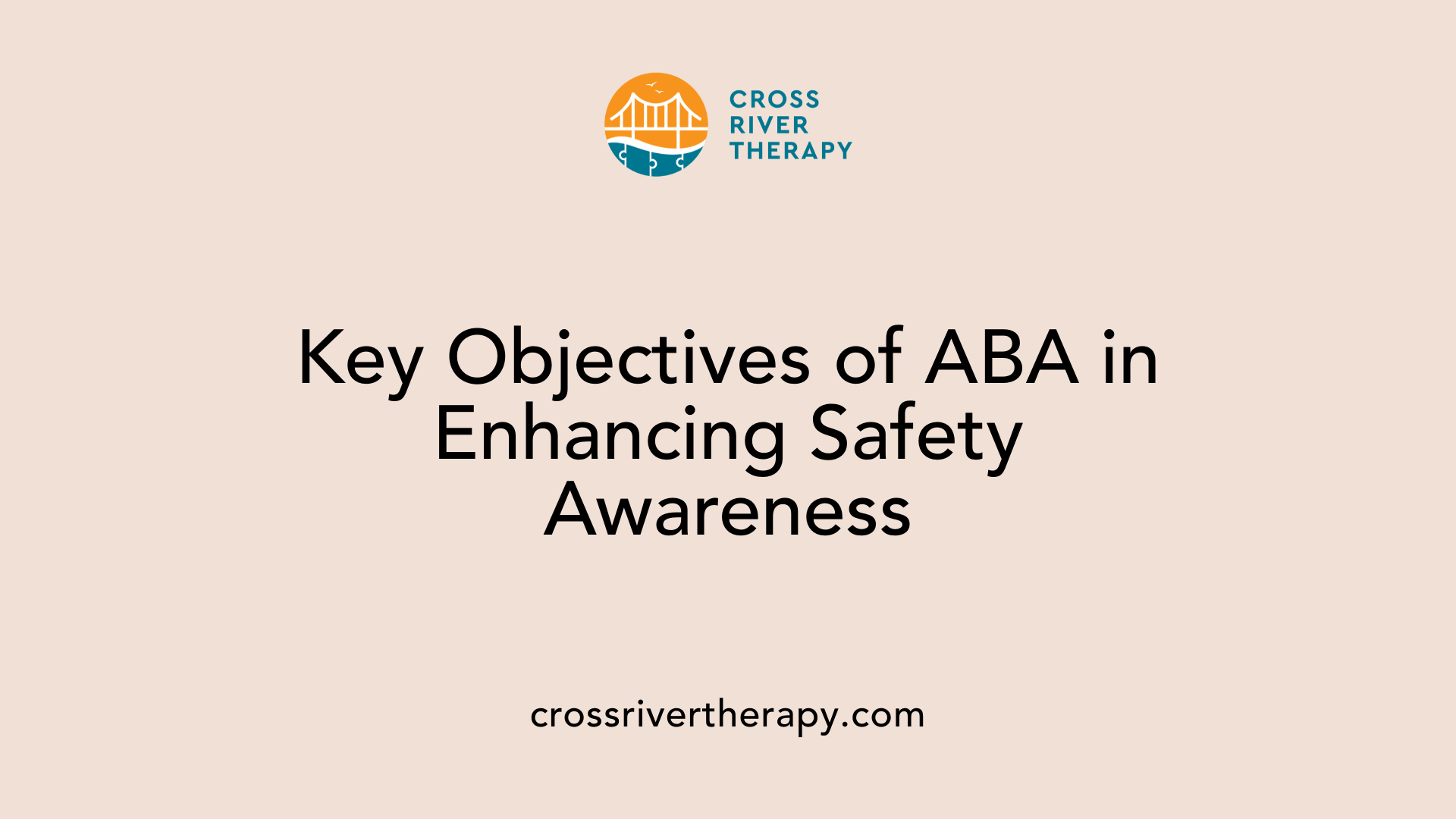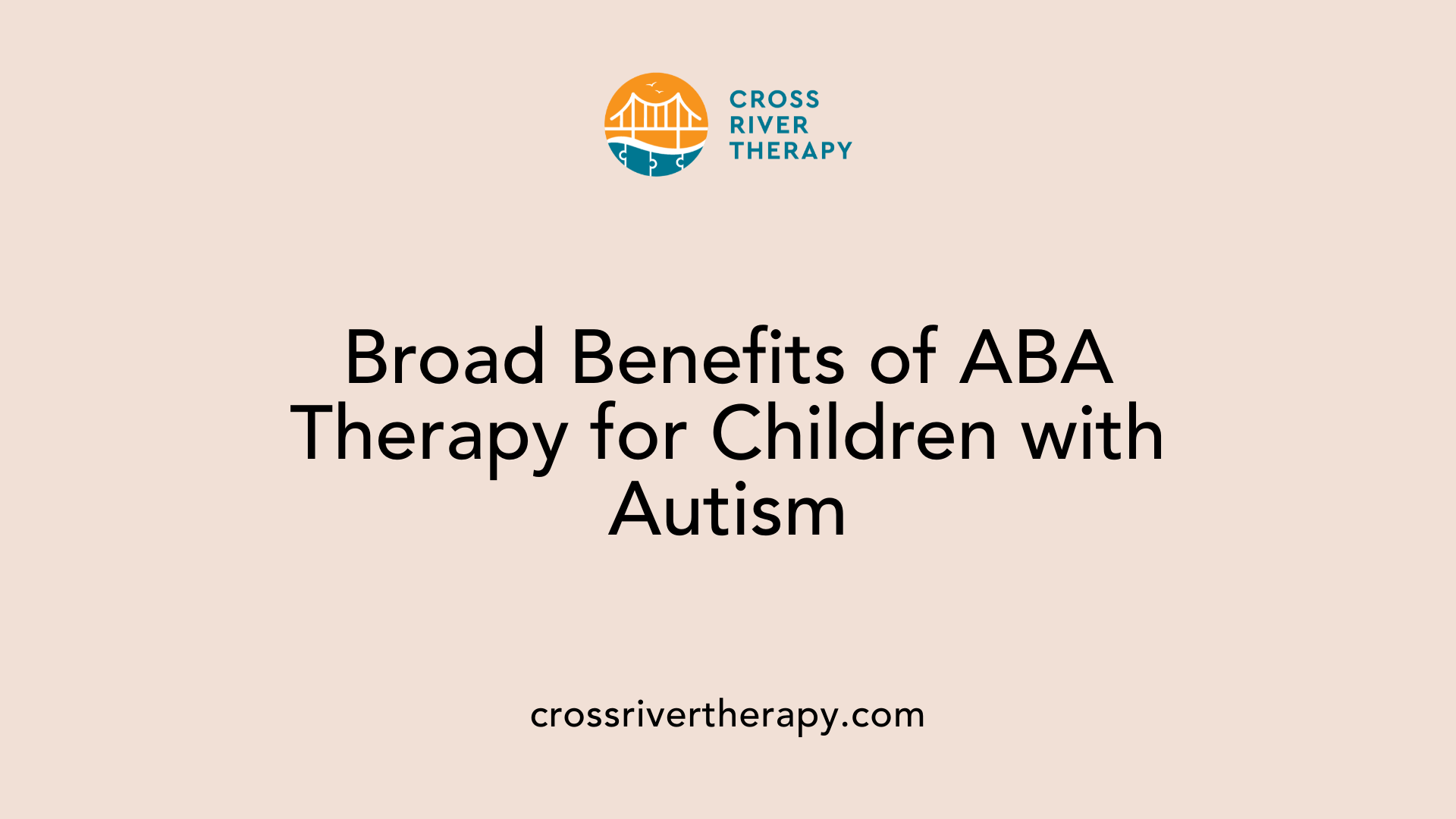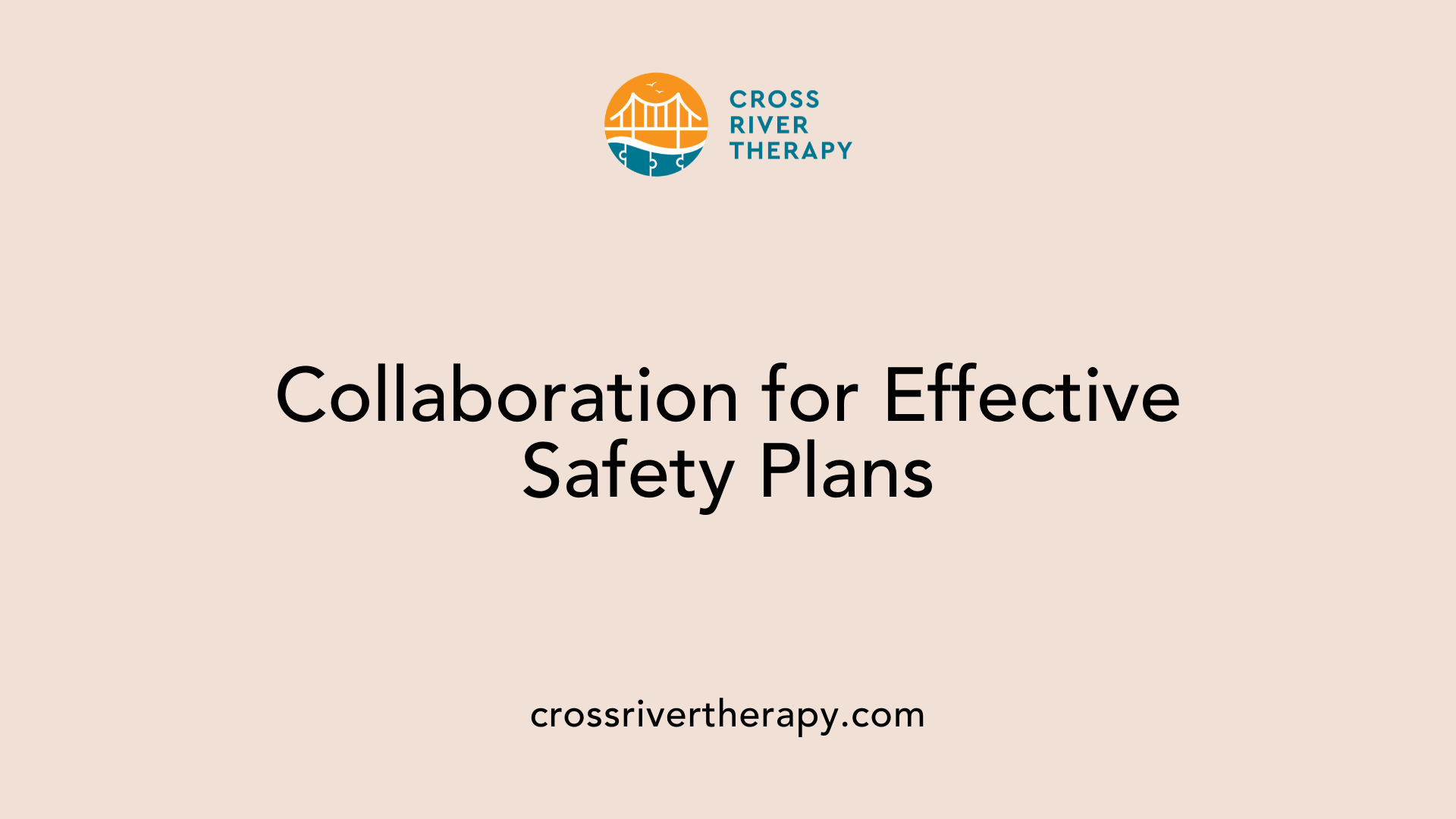How ABA Therapy Improves Safety Awareness for Children with Autism
The Role of ABA Therapy in Promoting Safety for Autistic Children
Understanding the Critical Role of Safety Awareness in ABA Therapy
In the journey of raising and supporting children with autism, developing safety awareness is crucial due to the unique challenges posed by this condition. Applied Behavior Analysis (ABA) therapy emerges as a powerful ally in enhancing safety capabilities among these children. This narrative seeks to explore the manifold ways ABA equips autistic children with safety awareness, ensuring they can navigate their environments more securely.
What is ABA Therapy for Autism?

What is ABA therapy for autism?
ABA therapy, or Applied Behavior Analysis, is an evidence-based intervention designed to improve the lives of individuals with autism by teaching helpful behaviors and reducing harmful ones. It utilizes positive reinforcement to encourage desired behaviors while employing an A-B-C model (Antecedent, Behavior, Consequence) to understand and modify behaviors effectively.
Components involved in ABA therapy
ABA therapy focuses on critical aspects that contribute to its effectiveness:
- Understanding Behaviors: It examines what happens before (antecedents) and after (consequences) a behavior to strategize effective interventions.
- Positive Reinforcement: Encouraging behaviors through rewards helps children repeat those desired actions, reinforcing learning.
- Personalized Approach: Each ABA program is customized according to the individual needs and strengths of the child, setting specific goals that evolve as they progress.
- Teaching Skills: Essential skills related to communication and safety are taught, helping children manage their own behaviors in practical ways.
Role of BCBAs in therapy
Board-Certified Behavior Analysts (BCBAs) are the professionals responsible for designing and implementing ABA therapy. Their expertise ensures that:
- Treatment Plans are Individualized: BCBAs assess each child's unique situation, focusing on both their challenges and strengths.
- Ongoing Support is Provided: They facilitate regular assessments and adjustments to therapy goals, ensuring maximum effectiveness as the child's needs change.
- Family Involvement: BCBAs work alongside caregivers, providing training and support to integrate learned skills into everyday life.
Through these components, ABA therapy aims to create a structured learning environment that fosters independence and enhances the overall quality of life for individuals on the autism spectrum.
Goals of ABA Therapy in Teaching Safety Awareness

Objectives of ABA in Safety Training
ABA therapy actively enhances safety awareness in children with autism by targeting essential areas of learning. It employs a structured approach where individual needs and strengths are prioritized. Specific objectives include:
- Identifying Risks: Teaching children to recognize potential dangers in their environments, such as traffic, strangers, or sharp objects.
- Understanding Safety Rules: Facilitating comprehension of basic safety rules, such as looking both ways before crossing the street or knowing whom to approach for help.
- Effective Communication: Addressing communication challenges by simplifying language and using visual supports, enabling children to express concerns or follow instructions more effectively.
- Emergency Response Training: Preparing children to react appropriately in emergency situations, teaching them ways to seek help or report hazards.
Skill Development for Safety Awareness
Skill development is a crucial aspect of ABA therapy, aimed at fostering independence and safety among children with autism. This development involves several strategies:
- Role-Playing: Engaging children in scenarios where they can practice responses to potential dangers, enhancing their confidence when facing real-life situations.
- Visual Supports: Utilizing tools such as social stories and picture schedules to convey expectations and rules visually, which aligns with the concrete thinking style of many children with autism.
- Breaking Tasks into Steps: Dividing safety tasks into small, manageable steps simplifies learning and helps children not feel overwhelmed.
- Positive Reinforcement: Encouraging children to practice and maintain safety behaviors through rewards, ensuring that safe actions become habitual over time.
- Involving Caregivers: Collaborating with caregivers in developing and reviewing comprehensive safety plans ensures children receive consistent guidance and support.
In summary, ABA therapy is an evidence-based approach that significantly improves safety awareness in children with autism. By teaching essential safety skills, addressing their unique challenges, and emphasizing individual strengths, ABA prepares children for safer, more independent lives.
Techniques Used in ABA Therapy for Enhancing Safety

Behavioral Techniques for Safety
Applied Behavior Analysis (ABA) therapy employs various behavioral techniques to enhance safety awareness in children with autism spectrum disorder (ASD). A fundamental aspect is breaking down safety tasks into manageable steps. This approach helps children grasp complex safety concepts by using clear, visual instructions tailored to their individual learning styles.
Visual supports, such as social stories and picture schedules, play an essential role in teaching safety concepts. They help children articulate expectations in different scenarios, facilitating understanding of what to do in potentially dangerous situations.
Role-playing is another effective technique, allowing children to practice responses to safety challenges in a safe setting. This method helps reinforce appropriate actions like "stopping before crossing the street" and encourages the application of learned skills in real-life contexts.
Role of Reinforcement in Learning Safety Skills
Positive reinforcement is a core strategy in ABA therapy, which promotes learning through rewards for displaying safe behaviors. By consistently rewarding children when they successfully demonstrate safety skills, such as identifying potential risks or responding correctly to instructions, the likelihood of these behaviors being repeated increases.
A structured approach involving ongoing support from caregivers and professionals further enhances the effectiveness of ABA interventions. Regular reviews and updates to safety plans ensure that children remain engaged and aware of their environment's safety nuances.
Overall, the integration of behavioral techniques with positive reinforcement creates a supportive learning environment that significantly fosters safety awareness and autonomy among children with ASD.
Benefits of ABA: Improving Safety and Beyond

Overall Benefits of ABA for Children with Autism
Applied Behavior Analysis (ABA) therapy significantly impacts children with autism, addressing not only behavioral challenges but enhancing essential life skills. The therapy is tailored to individual needs, creating personalized treatment plans designed by board-certified behavior analysts (BCBAs).
This individualized approach leads to improvements in various areas, including language development, social skills, and daily living activities. Ongoing research supports ABA's long-term efficacy, showing benefits such as better academic performance and improved social functioning.
Importance of Safety in ABA Programs
Safety is a crucial focus within ABA therapy, particularly for children with autism, who may struggle to understand potential dangers. ABA strategies that address safety concerns incorporate positive reinforcement to teach safe behavior. For example, children can learn effective responses to potentially dangerous situations, such as crossing the street safely.
Methods like visual supports and social narratives help reinforce safety concepts, making abstract ideas more concrete. By developing self-management skills and enhancing safety awareness, ABA empowers children to navigate their environments more confidently and independently.
Role-Playing and Modeling for Safety Skill Development
Importance of role-playing in learning
Role-playing is a powerful tool in Applied Behavior Analysis (ABA) therapy, especially for teaching safety skills to children with autism spectrum disorder (ASD). This method allows children to practice scenarios in a controlled environment, which can significantly reduce anxiety during actual situations. By reenacting various events, children learn to respond appropriately to safety challenges, such as identifying hazards or responding to emergencies.
This interactive approach makes abstract concepts more tangible. For instance, children can simulate scenarios involving crossing a street or recognizing unsafe situations, helping them internalize important safety behaviors. Furthermore, role-playing can strengthen their social skills, as it often involves collaborating with peers or therapists, fostering communication and teamwork.
Practical applications of modeling behaviors
Modeling behaviors is another effective strategy in ABA therapy that complements role-playing. This technique involves demonstrating specific safety behaviors for children to observe and imitate. For instance, a therapist might show how to safely cross the street using a designated crosswalk, providing a clear example of the expected behavior.
This visual learning method is particularly beneficial for children who struggle with verbal instructions or abstract concepts. By breaking down safety tasks into observable steps, children can grasp expectations more easily. Incorporating positive reinforcement, such as praise or rewards when children successfully replicate the modeled behavior, further encourages safe practices.
Together, role-playing and modeling behaviors equip children with the necessary skills for safe interactions in various environments, empowering them with increased awareness and confidence.
Customizing Safety Awareness Programs in ABA Therapy
Individualized Treatment Plans
Tailoring safety awareness programs in Applied Behavior Analysis (ABA) therapy is crucial to meet the unique needs of each child with autism. Board-certified behavior analysts (BCBAs) craft individualized treatment plans. These plans are designed to align with the child's strengths, challenges, and specific safety concerns.
Each program incorporates strategies that account for the child's understanding of safety concepts, ensuring that goals are both realistic and achievable. Techniques such as visual supports, social narratives, and positive reinforcement are pivotal in helping children grasp essential safety skills.
Addressing Specific Safety Challenges
Children on the autism spectrum may face distinct safety challenges due to their cognitive differences. For instance, they might struggle to understand abstract concepts, like danger, leading to potential risks in their environment. Through structured ABA therapy, professionals can focus on teaching safety skills like identifying hazards and understanding safe behavior in various contexts.
Role-playing and modeling allow for hands-on practice in controlled scenarios, making learning more concrete. Moreover, breaking tasks into manageable steps ensures that the child can learn to respond appropriately in real-life situations, enhancing their overall safety awareness.
Addressing Communication Barriers in Safety Scenarios
Communication Challenges in Autism and Safety
Children with autism often face unique communication difficulties that can impact their understanding of safety concepts. Abstract ideas, such as danger or safety rules, can be particularly challenging. Typically, children with autism think in concrete terms, making it harder for them to grasp these essential concepts. These communication challenges can hinder their ability to express themselves or comprehend verbal instructions, which becomes critical when responding to potential emergencies.
ABA Strategies for Overcoming These Barriers
Applied Behavior Analysis (ABA) therapy offers effective strategies to help children overcome these communication barriers. Techniques such as visual supports—like social stories and picture schedules—are useful for teaching safety concepts in a more tangible way.
Engaging in role-playing activities allows children to practice how to respond in safety scenarios within a controlled environment, enhancing their understanding and response skills. Breaking down safety tasks into smaller steps and providing clear, visual instructions further aids their learning process.
Additionally, positive reinforcement can motivate children to practice safe behaviors consistently. Ongoing support from caregivers and professionals is essential in developing tailored safety plans, ensuring children learn to communicate their challenges and respond effectively in real-world safety situations.
Community and Caregiver Involvement in Safety Plans

Collaborative safety strategies
Effective safety plans for children with autism require collaboration among various stakeholders. This includes behavior analysts, parents, caregivers, and sometimes educators. By working together, they can develop tailored strategies that reflect the individual child's needs and challenges.
One critical aspect of these plans is ensuring everyone involved understands the specific safety skills being taught through ABA therapy. It is essential to delineate roles in the child's safety protocol—who can reinforce behaviors, who is responsible for supervision, and how to respond in emergencies.
Role of caregivers in implementing ABA safety training
Caregivers play a vital role in the implementation of safety training derived from ABA therapy. Their consistent reinforcement of safety skills at home, such as following safety routines and using visual supports, enhances learning considerably. Visual aids like social stories or picture schedules can be employed to clarify safety protocols, assisting in the understanding of complex concepts like danger.
Additionally, ongoing communication between caregivers and therapists is key. Regular reviews of progress allow adjustments in safety training as needed, ensuring that the child continues to advance toward greater safety awareness and independence.
A collaborative approach not only harnesses the strengths of each participant but also fosters a supportive environment, reinforcing safety principles that contribute to the overall well-being of children with autism.
The Path to Safer Futures with ABA Therapy
ABA therapy is an indispensable tool in arming children with autism with the necessary skills for safety awareness. By individualizing treatment plans and engaging families and communities, ABA therapy not only addresses current challenges but also lays down a foundation for future independence and security. As research and practices in ABA continue to evolve, so too does the potential for enhancing the safety and quality of life for autistic individuals.
References
- Applied Behavior Analysis (ABA) | Autism Speaks
- 5 Tangible Ways ABA Therapy Helps Children with Autism
- Promoting Safety Skills and Awareness in Children with Autism
- Applied Behaviour Analysis (ABA) and autistic children
- What is ABA Therapy? - Behavioral Innovations
- Does ABA Therapy Work for Aggression & Impulse Control?
- Debunking 7 Common Myths About ABA Therapy - GSEP Blog
- Do You Need an Autism Diagnosis to Qualify for ABA Therapy?
- The Controversy Around ABA - Child Mind Institute
- Is ABA Therapy Only for Autism? Myths Debunked



